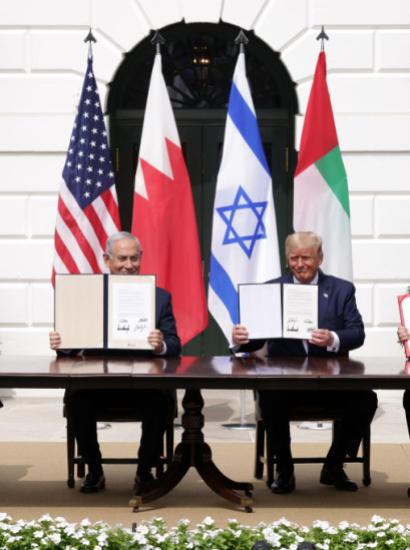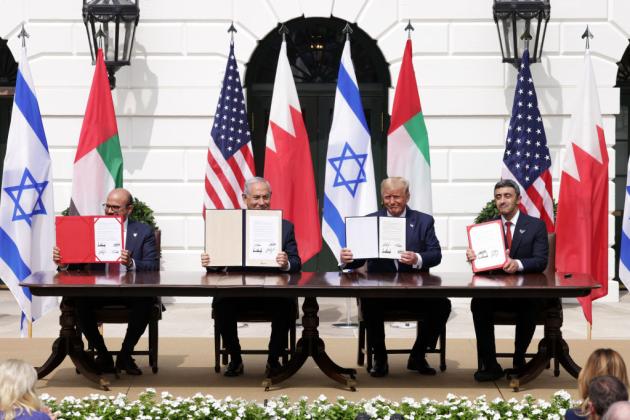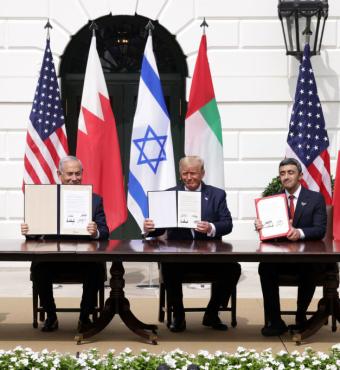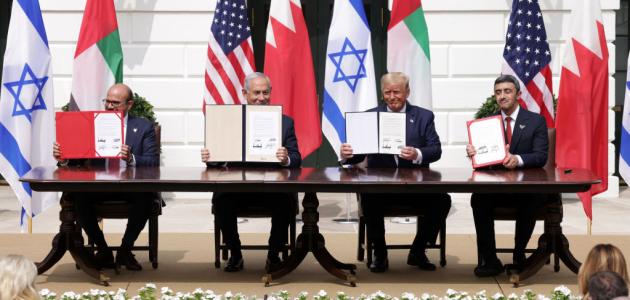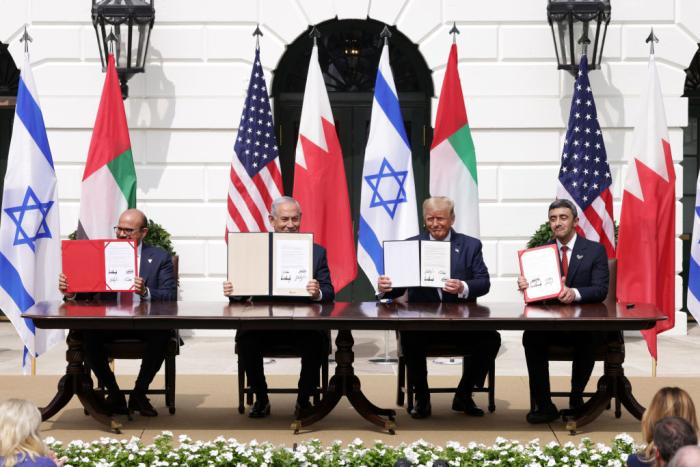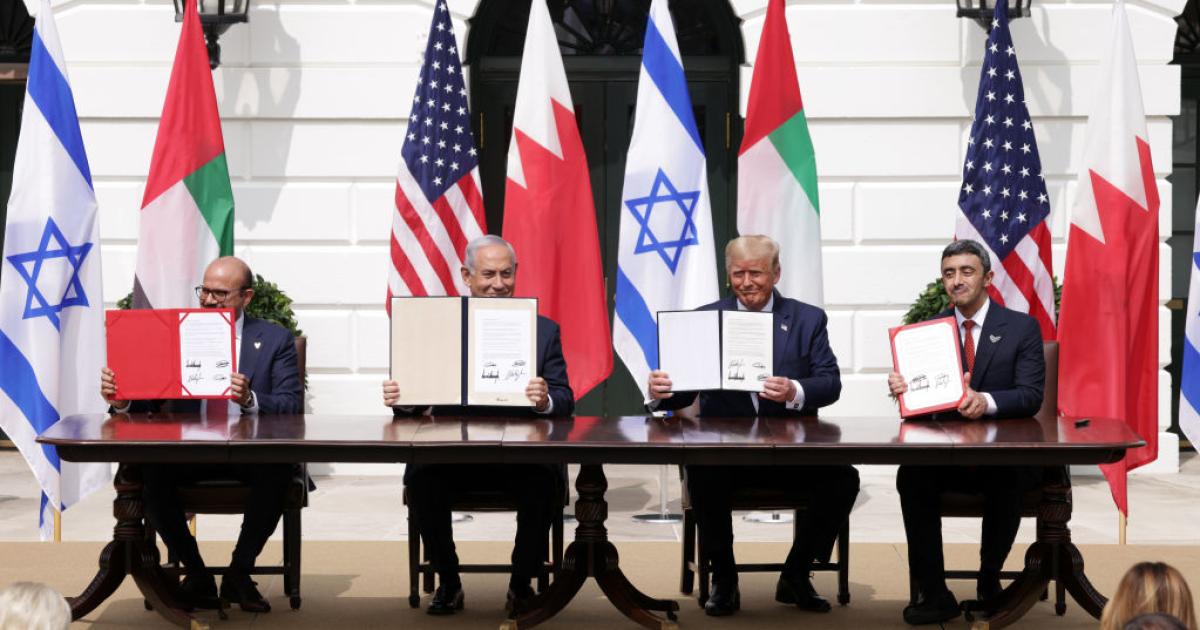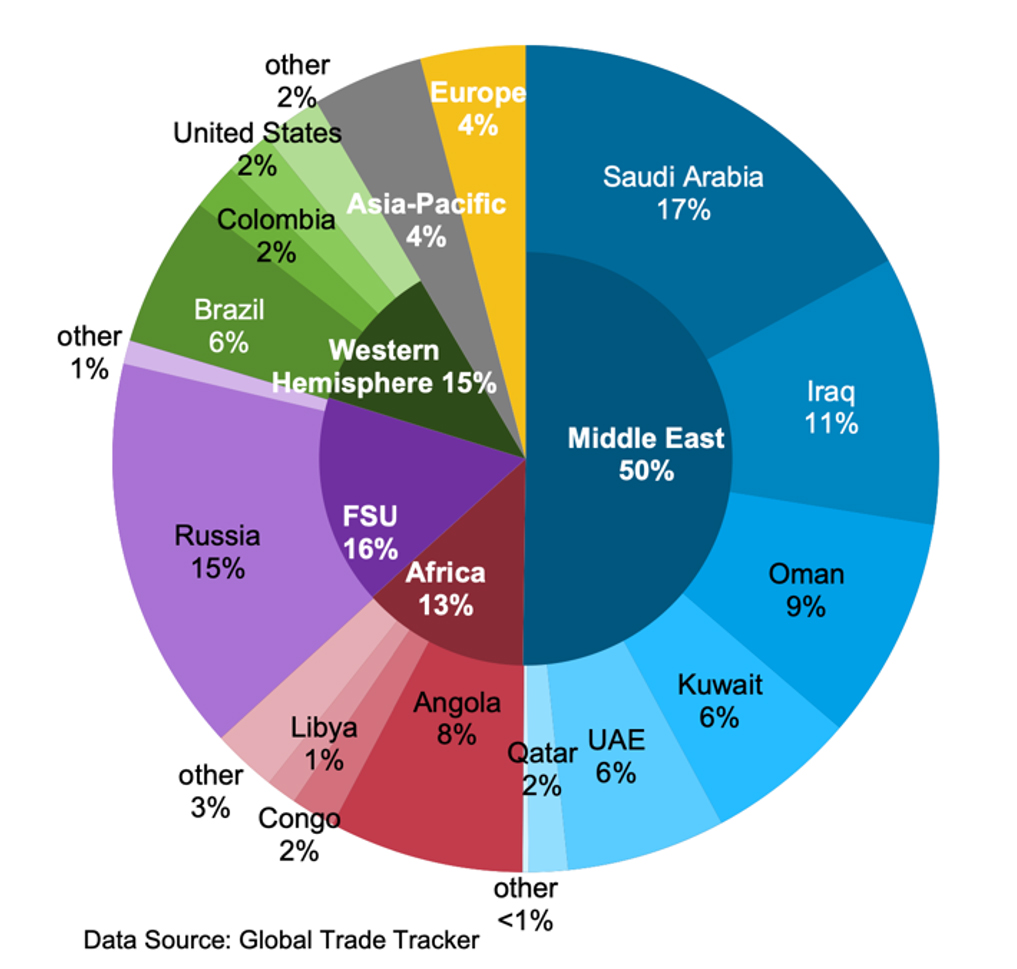
The Abraham Accords provide an unprecedented opportunity to increase trade and investment among its members significantly by establishing a regional free trade area which would ensure progress toward their aspirations, preserve the integrity and stability of global markets, fuel growth, and constrain China’s predatory trade practices.
Signatories to the Accords committed to a shared vision of peace and prosperity and recognized that economic integration can enable members to achieve their long term economic goals. The Accords have paved the way for comprehensive partnerships on a variety of issues related to security, trade, investment, the environment, innovation, tourism, energy, and other key sectors. While the growth in bilateral trade is of great significance, the true transformative power of these peace agreements lies in expanding regional integration and cooperation.
This is already underway. Israel concluded a Comprehensive Economic Partnership Agreement (CEPA) with UAE in December 2022 and is currently negotiating a free trade agreement with Bahrain. Both will significantly accelerate economic development and provide incentives for others to follow suit. Israel's new Foreign Minister Eli Cohen recently stated that the volume of trade with Arab countries that normalized relations with Israel under the Abraham Accords in 2020 exceeded $2.8 billion dollars in 2022.
While progress has been remarkable, its potential is far greater. According to the RAND analysis of the potential of bilateral free trade agreements (FTA) between Israel and current signatories, the Accords could create 46,000 new jobs and $24 billion in new economic activity for Israel's four partners. The benefits of a multi-lateral FTA encompassing current signatories would triple the overall benefit, creating more than 150,000 new jobs and new economic activity exceeding $75 billion. A multi-lateral FTA among an expanded number of potential signatories to the Accords could create as much as 4 million new jobs and $1 trillion in new economic activity through 2030.
This potential is not lost on the Chinese Communist Party (CCP). The CCP represents one of the most significant threats challenging the United States and its partners and allies. China’s state-directed economic policies, predatory lending, cyber intrusions, theft of intellectual property, illicit technology transfer and other coercive practices, industrial subsidies, and market access restrictions on key sectors of China’s economy constitute the most significant threats of the coming century.
Several trends exacerbate the need for integration of markets aligned toward common goals. The global pandemic, the Russian invasion of Ukraine, Brexit, along with tariff tensions, political instability, protectionist policies and regulatory uncertainty have threatened global trade by disrupting established supply chains and their underlying constellation of business models and trade relationships.
As is often the case, these complex and interrelated challenges constitute an opportunity to realign our trade to safeguard the integrity of global markets, pursue U.S. goals and objectives, in collaboration with our partners and allies. The Abraham Accords offers just such an opportunity.
It’s in the best interests of Abraham Accords members to form a cooperative regional trading agreement for mutual benefit.
Despite low trade barriers under the Gulf Cooperation Council (GCC) common market agreement concluded in 2007, intra-GCC non-oil trade has remained low, comprising only 10 percent of total non-oil trade. It is likely due to similar economic structures and levels of economic development, though the transition necessary to achieve long term goals will require focus to resolve. The United Arab Emirates (UAE) continues to lead the region as its major re-exporting hub, followed by Saudi Arabia and Oman.
Before the COVID-19 pandemic, tariff barriers were largely non-existent and nontariff trade barriers between GCC countries had been progressively lowered to incentivize trade. The adoption of uniform technical standards lowered administrative burdens and customs clearance requirements and could be applied across Accords member nations to achieve similar results. The remaining indirect trade barriers include preferential policies and practices related to public procurement, subsidies to domestic producers, and customs border controls.
While the World Trade Organization (WTO) predicts world trade is expected to lose momentum and remain subdued in 2023 as multiple shocks, such as the war in Ukraine, high energy prices, inflation, and monetary tightening, impact the global economy, not all regions will be equally impacted. Notably, the Middle East had the strongest trade volume growth of any region in 2022.
The Middle East has become a global logistics hub as countries have built modern warehouses and transportation infrastructure, developed free trade zones, simplified customs procedures, and strengthened their anti-corruption measures.
The Middle East has also filled a vital gap for Africa, South and Central Asia, and India, which have some of the world’s fastest-growing consumer markets but suffer from a lack of adequate transport infrastructure and services. Abraham Accords countries can serve as gateways for goods coming from Asia, Europe, sub-Saharan Africa, and North America as distribution points for goods moving within markets in the Middle East and North Africa.
The Accords, and the new connections which are possible as a result, provide an unprecedented opportunity to reorient market access and global transportation hubs enabling improved efficiency and the establishment of trusted supply chains on terms favorable to the United States and its partners. Israel can leverage the UAE as a logistical hub for market access to India and Asia, Bahrain to expand ties to Saudi Arabia, Morocco for expanded access to the European Union (EU) and sub-Saharan Africa, Kosovo for access into the emerging markets of Eastern Europe, and Sudan for the horn of Africa. In return, Accords members can leverage Israel’s strategic location in the Eastern Mediterranean and its access to the US market.
Of course, the benefits of integration have not escaped the attention of its residents, who have worked within existing constructs and sought new ones to reach their shared goals and full potential.
In 1956 the idea for an economic union of North African states followed the independence of Tunisia and Morocco that same year. Thirty years later Algeria, Libya, Mauritania, Morocco, and Tunisia met for the first summit in 1988. The Union was established in February 1989 by treaty signed in Marrakech. Its strategic relevance then and now lies in its geographic position as a crossroads of international trade, as well as its energy and fertilizer resources.
In 1964 the Council of Arab Economic Unity (CAEU) was founded by Egypt, Iraq, Jordan, Kuwait, Libya, Mauritania, Palestinian territories, Saudi Arabia, Sudan, Tunisia, Syria, United Arab Emirates and Yemen following an agreement in 1957 by the Economic Council of the Arab League.
In 1997 the "Greater Arab Free Trade Area" (GAFTA) was founded by 14 countries (Bahrain, Egypt, Iraq, Kuwait, Lebanon, Libya, Morocco, Oman, Qatar, Saudi Arabia, Sudan, Syria, Tunisia, and the United Arab Emirates. Algeria joined in 2009) to establish a pan-Arab free trade zone. The agreement was built upon the "Agreement to Facilitate and Develop Trade Among Arab Countries" concluded by the Arab League's Economic and Social Council (ESC) which supervises GAFTA.
In February 2004 the “Agadir Agreement" called for the creation of a free trade zone between the Arab Mediterranean Nations including Jordan, Tunisia, Egypt and Morocco (Palestine and Lebanon were subsequently approved as members in 2016) which was seen as a first potential step in the formation of the Euro-Mediterranean free trade area as originally envisaged in the Barcelona Process. The Agreement aimed to establish a Free Trade Area among the member states, and with the European Union. It encompassed the implementation of the Pan-Euro-Mediterranean rules of origin and the utilization of the principle of cumulation of origin. Cumulation could enhance the signatories export capacity towards the external markets and boost attraction for more foreign and direct investment and provides a valuable insight as we consider the formulation of an Abraham Accords Free Trade Area supported by the United States and possibly European and Asian partners.
The growing constellation of Free Trade Zones within the region provide an opportunity for greater regional integration and afford greater flexibility for Foreign Direct Investment.
The Abraham Accords have already led to tremendous economic opportunities, which will increase prosperity and quality of life in the participating countries. As commercial ties grow, so will the strength of the bonds between the countries and their people.
Cooperation among members committed to the preservation of free and fair trade will constrain China’s predatory trade practices which disrupt global trade, place supply chains at risk, degrade the foundations of openness, economic growth, and prosperity.
China has built strategic or cooperative partnerships with eight Arab countries, and has set up a strategic dialogue mechanism with the Gulf Cooperation Council (GCC) as part of a comprehensive strategy for the Middle East. Arab countries have become China's largest source of crude oil and its 7th biggest trading partner.
An estimated 15.3 million barrels per day of petroleum and other liquids were consumed in China in 2021, up approximately 6 percent from 2020. Countries in the Middle East made up 50 percent of all crude oil imports in 2021, including Saudi Arabia, Iraq, the United Arab Emirates (UAE), Kuwait, Qatar, and Oman. Imports from the UAE alone have more than doubled in the past three years, increasing from 307,000 barrels per day in 2018 to 642,000 in 2021 and have partly offset the decrease in Iran’s share of China’s imports.

Figure 1. China's crude oil imports by source, 2021. EIA, Country Analysis: China; Updated August 8, 2022.
According to the U.S. Energy Information Administration (EIA) China’s natural gas consumption rose by 13 percent in 2021. Between 2011 and 2021, China’s natural gas demand increased by about 11 percent per year on average, making it the world’s third-largest natural gas consumer behind the United States and Russia.
The importance of the relationship was on full display as the Saudis received Chinese President Xi Jinping in December. Xi’s visit included three summit meetings: a Saudi Arabia-China summit attended by King Salman and Crown Prince Mohammed bin Salman; a Gulf Cooperation Council-China summit; and an Arab-China summit. The extent of those events stands in stark contrast to President Biden’s visit to Jeddah in July.
The scope of the China- GCC summit which included Bahrain, Kuwait, Oman, Qatar, Saudi Arabia, and the United Arab Emirates was sweeping and should serve to jar western observers from their complacent slumber. President Xi said that China would establish a nuclear security center with the Gulf, focusing on the peaceful civilian use of nuclear power. Discussions encompassed a potential joint investment council, free-trade agreement, and even the establishment of a center for space exploration.
During Xi's brief visit nearly all regional heads of state responded to the siren song of the shifting regional order; the President of Egypt; the Prime Minister of Algeria; the Palestinian President; the chairman of Sudan’s Sovereignty Council; the Crown Prince of Kuwait; the Prime Minister of Iraq; the Prime Minister of Lebanon; the Deputy Prime Minister for the Council of Ministers; and the President of Tunisia.
Xi emphasized mutual respect for national sovereignty and discussed his desire to integrate the Belt and Road Initiative (BRI) into the aspirations of the regions’ leaders, including Kuwait Vision 2035, Saudi Vision 2030, and Qatar National Vision 2030. China and Saudi Arabia signed no less than 34 energy and investment deals, covering renewable energy, infrastructure, healthcare, and innovation, while Xi was in Riyadh.
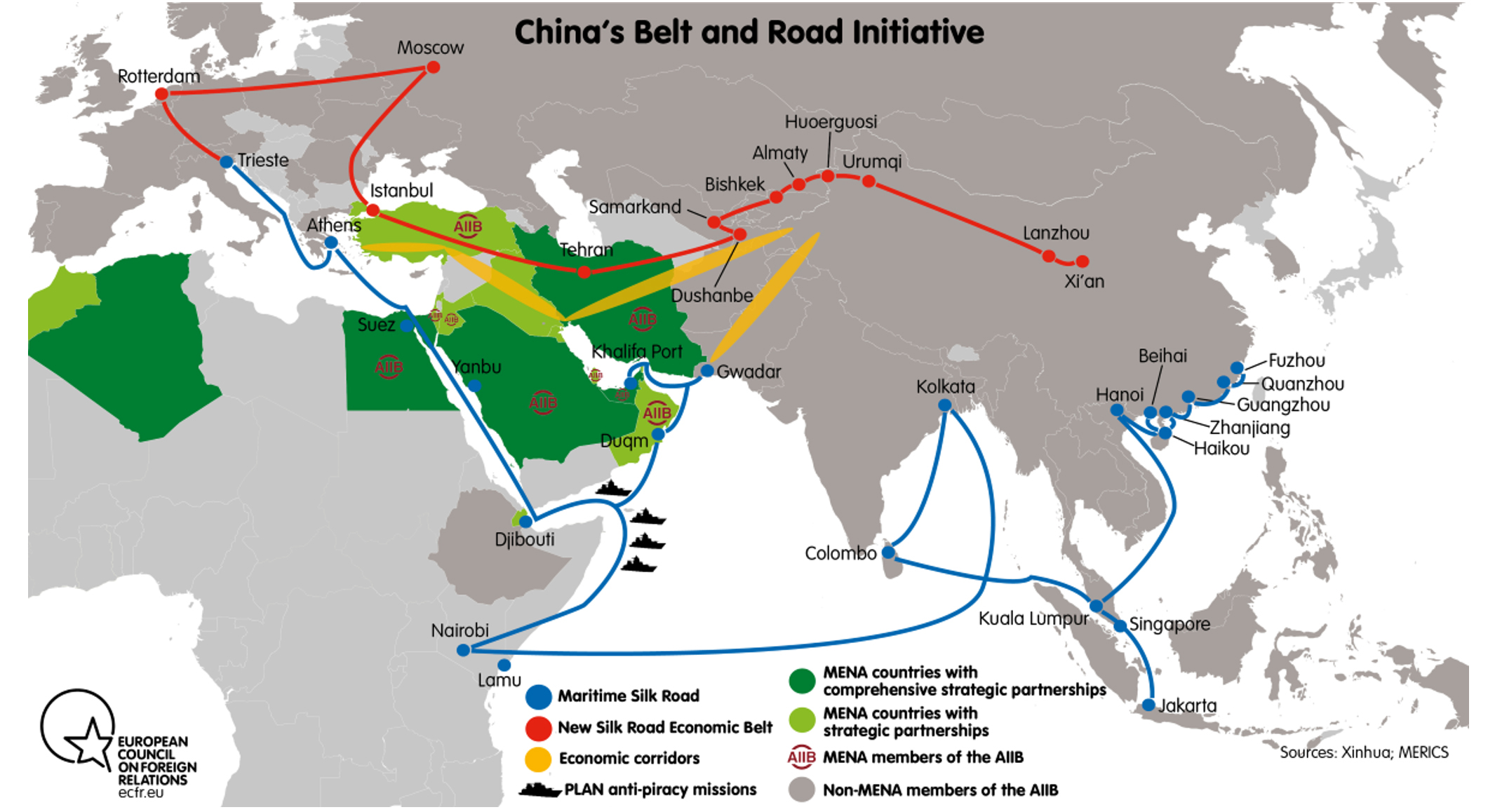
Figure 2. China's Belt & Road Initiative, European Council on Foreign Relations.
It’s in the U.S. best interests to align our trading partners in MENA into a cooperative forum, built on the Accords and lessons learned from past efforts at regional integration.
The United States played a decisive role in brokering the Accords and will remain a vital partner to sustain and expand the historic agreements. U.S. trade policy has consistently focused on the pursuit of U.S. economic growth and competitiveness by reducing international trade and investment barriers, fostering an open, transparent, and nondiscriminatory trading system, enforcing partner trade commitments and U.S. law, and supporting American workers and companies adversely affected by unfair foreign trade practices.
President Carter’s Presidential Decision 63 dated January 15, 1981, commonly referred to as the “Carter Doctrine”, reflected the importance of the region, the vital U.S. interests at stake, and a corresponding commitment to establish and maintain a significant presence in the region and develop the capabilities of our partners and allies to defend them.
The Middle East remains a critical component of the global economy. It accounts for 31 percent of global oil production, 18 percent of gas production, 48 percent of proven oil reserves and 40 percent of proven gas reserves. Approximately 12 percent of global trade and 30 percent of global container traffic traverse the Suez alone, transporting over $1 trillion worth of goods per annum. In 2018, its daily oil flow averaged 21 million barrels per day, or the equivalent of about 21 percent of global petroleum consumption. While the United States may no longer be dependent upon the region’s petrochemical resources, the global economy is. For no other reason it would be strategic hubris to abandon the Middle East and its petrochemical resources which sustain the global economy (of which we are the principal beneficiary) and upon which China is wholly dependent.
Nor is the region’s significance limited to energy. The global network of underwater cables forms a significant part of the internet’s backbone. Sixteen of these submarine cables pass through the Red Sea before they transit over land through Egypt to the Mediterranean Sea, connecting Asia and Europe. The transition to knowledge-based economies will inevitably result in greater value and importance assigned to telecommunications infrastructure.
Several attempts have been made to recognize the convergence of economic interests between the United States and its Middle Eastern and North African partners, as well as among the nations of the region themselves. Each offers a window into persistent logic and potential, as well as pitfalls and challenges.
In May 2003, the U.S. proposed the Middle East Free Trade Area Initiative (MEFTA), a plan of graduated steps for Middle Eastern nations to increase trade and investment with the United States and other global partners, in pursuit of a regional free trade agreement. The U.S. MEFTA initiative started in 2003 with the purpose of creating a U.S. & Middle East Free Trade Area by 2013. The U.S. objectives were to incrementally increase trade and investment in the Middle East, and to assist the region in implementing domestic reforms, instituting the rule of law, protecting property rights, and creating a foundation for openness, economic growth, and prosperity.
The United States sought to expand and deepen economic ties through a constellation of preferential trading agreements and included Trade and Investment Framework Agreements (TIFAs), Bilateral Investment Treaties (BITs), comprehensive Free Trade Agreements (FTAs), in addition to other measures. Bilateral FTAs with Israel, Jordan, Morocco, Bahrain, and Oman are currently in effect. Serious consideration should be given to concluding free trade agreements with Egypt, Saudi Arabia, Kuwait, and the UAE, while setting conditions for negotiations with Sudan as an incentive to overcome the current political impasse.
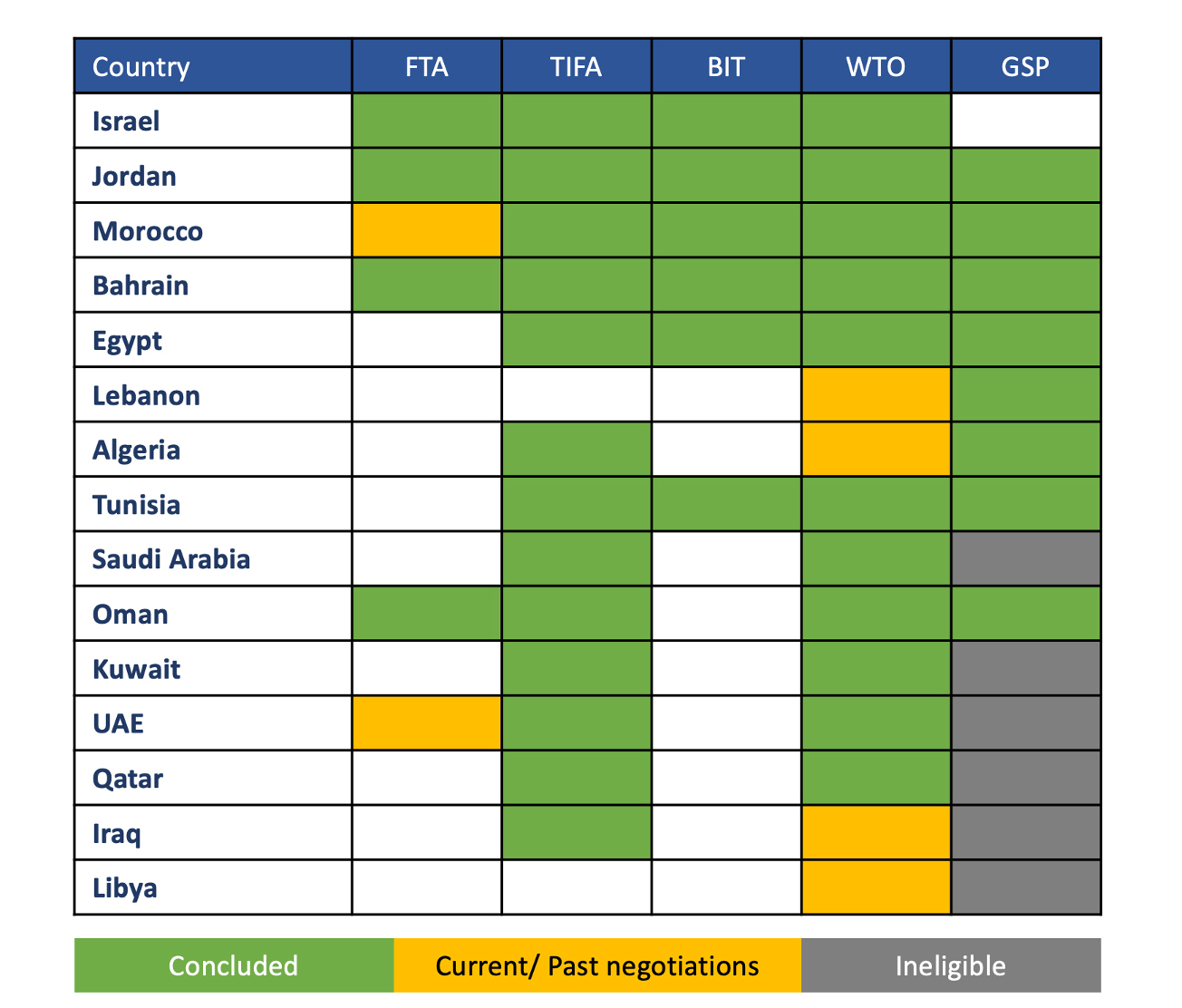
Figure 3. U.S. Middle East & North Africa Trade Agreements.
The U.S. Congress has also taken steps to encourage and expand cooperation among regional partners. It established the Qualifying Industrial Zone (QIZ) initiative in 1996 to encourage the Middle East peace process. The initiative allows both Egypt and Jordan to export products to the United States duty-free, provided the exported products contain inputs from Israel. U.S. tariffs on textile and apparel goods are high, which makes production of these goods in QIZs especially attractive.
Building on this initiative, Presidential Proclamation 6955 established QIZs in Jordan, the West Bank, and the Gaza Strip in November 1996. By December 2004 three QIZs were designated in Egypt: the Greater Cairo zone, the Alexandria zone and the Suez Canal zone.
The Accords also provide a bridge connecting previous efforts at regional integration with a viable path forward.
On December 8, 2021, the Abraham Accords Peace Institute (AAPI) convened the first Trade and Investment Forum in Abu Dhabi assembling senior public and private decision-makers from the Accords countries to assess economic progress over the past year, prioritize strategies to optimize trade and investment, and advance concrete initiatives to realize the full potential of the Accords. For the first time ministers of trade, commerce, industry and finance, management from sovereign wealth funds and investment bodies, and senior business executives from Israel, the UAE, Bahrain, Morocco, Egypt, and Jordan met to establish economic goals and chart a course to achieve them.
The recognition of the economic potential, aligned national interests, and benefits of mutually beneficial integration has fueled the progress of the Accords and provides the foundation for a new regional free trade area in collaboration with the United States and aligned partners from Europe and Asia which share common values and interests. It would also serve as a positive alternative to China’s predatory belt and road initiative which exploits the vacuum to its advantage.
To translate this vision into reality I recommend the following preliminary steps:
- The United States and Abraham Accords members should undertake an effort to map the complex array of barriers and impediments to integration and provide options to address each.
- Abraham Accords member nations trade ministers should convene to discuss the path towards regional integration and the guiding principles for its creation.
- The United States Trade Representative (USTR) should convene trade ministers and appropriate counterparts from the Accords member nations to discuss the potential benefits, parameters, and an incremental approach to establishing a MENA Free Trade Area by 2030 built upon an Abraham Accords Free Trade Area in effect by 2025.
- The USTR should also complete Free Trade Agreements with AA members who do not already enjoy the benefits. Having done, so the dividends of cumulation could be leveraged.
- The Negev Forum should establish a working group consisting of trade ministers with this objective.
- European and Asian trading partners should also meet to consider how their own constellation of trade agreements can benefit participants.
- All parties can meet, perhaps during UNGA 78 in New York or COP 28 in the UAE to officially launch the effort and chart a path forward.
Informed by past efforts like MEFTI, GAFTA, and Agadir, guided by successful contemporary constructs like ASEAN and USMCA, and possibly supported by existing coordination mechanisms like the Negev Forum, GCC, Arab League, and African Union, the United States can build on the Abraham Accords to pursue mutually beneficial agreements ensuring progress towards common goals and objectives while constraining detrimental activity from hostile competition.
The Abraham Accords hold the potential to serve as the foundation for regional peace and prosperity by demonstrating the tangible benefits of interpersonal ties, trade, commerce, and mutual cooperation. Informed by the lessons learned in previous efforts to integrate the region, guided by the progress it has made in recent decades, and driven by the aspirations of its people, the historic agreements provide an unprecedented opportunity to significantly increase trade and investment among its members. This would accelerate progress toward long term goals by establishing a regional free trade area which would preserve the integrity of global markets, constrain China’s predatory trade practices, and help the region turn the page on a generation of conflict and instability.
Robert Greenway served as Deputy Assistant to the President and Senior Director for Middle Eastern and North African Affairs until January 11, 2021 and is President and Executive Director of the Abraham Accords Peace Institute, and an adjunct fellow at the Hudson Institute. The views expressed are his own.









